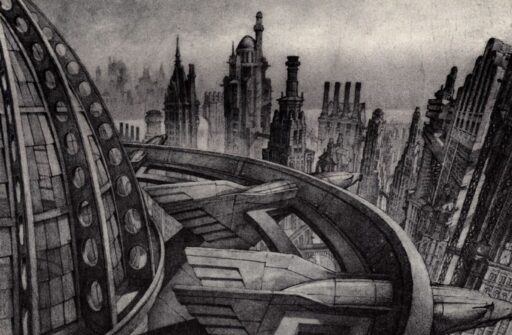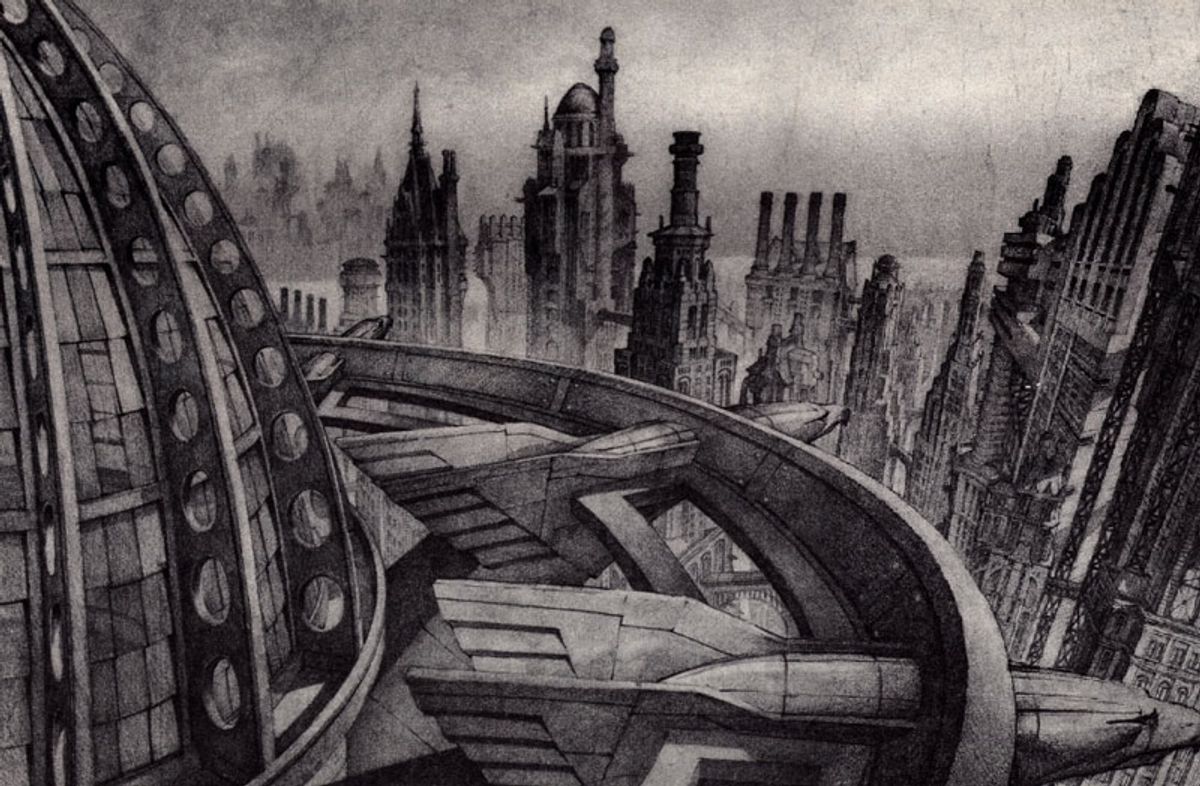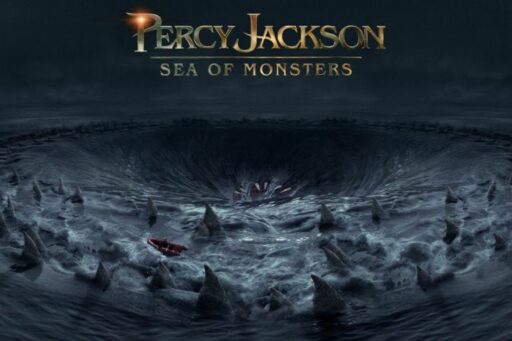Tim Burton is a name that instantly evokes images of eccentric characters, dark and gothic aesthetics, and visually stunning cinematic worlds. With a career spanning several decades, Burton has carved a niche for himself in the film industry, captivating audiences with his unique storytelling and imaginative visuals. From Edward Scissorhands to The Nightmare Before Christmas, his films have become instant classics, showcasing his distinct style and creative genius.
Key Takeaways
- Tim Burton’s films, characterized by a dark and gothic aesthetic, have become synonymous with the macabre and supernatural, influencing both cinema and pop culture.
- His collaborations with talents like Johnny Depp and composer Danny Elfman have resulted in some of the most iconic characters and scores in film history.
- Burton has a talent for balancing the eerie with the enchanting, creating films that are visually stunning and emotionally resonant, exploring themes of identity and societal norms.
- Through reimaginings of classics and original stories, Burton has crafted a filmography that spans from cult classics like ‘Beetlejuice’ to reinterpretations like ‘Sleepy Hollow’ and ‘Batman Returns’.
- His impact on filmmaking extends beyond his own movies, as he has inspired a generation of filmmakers and artists with his distinctive vision and storytelling techniques.
The Enigmatic Auteur: Exploring Tim Burton’s Signature Style
A Fascination with the Macabre and Supernatural
Tim Burton’s cinematic universe is steeped in the shadows of the macabre and the whispers of the supernatural. His films often explore the eerie and the otherworldly, creating a unique tapestry that weaves together the living and the spectral.
Burton’s characters frequently grapple with existential quandaries and the thin veil between life and death. This fascination is not just a thematic choice but a visual spectacle, as seen in the gothic architecture and the ethereal presence that haunts his sets.
- Beetlejuice showcases a ghostly dimension beyond our own.
- Sleepy Hollow delves into the legends of headless horsemen and secret covens.
- Edward Scissorhands examines the isolation of being different in a world that demands conformity.
Burton’s narratives are a dance with darkness, where the macabre is a character in its own right, and the supernatural is as real as the ground beneath our feet.
The Balance of Light and Dark in Burton’s Cinematography
Tim Burton’s cinematographic mastery lies in his ability to juxtapose vibrant colors with the shadowy undertones of gothic aesthetics. His films are a visual testament to the duality of beauty and melancholy, often set against dystopian backdrops that are rendered with a whimsical twist. The characters Burton brings to life embody this same contrast, often appearing as misfits or outcasts, yet portrayed with an endearing charm.
Burton’s unique visual style is not just a feast for the eyes but also a narrative device. The interplay of light and dark is used to reflect the inner turmoil and complexities of his characters. This technique is evident in the way he seamlessly blends genres, infusing his narratives with both humor and gravity. His approach to storytelling and character development may have received mixed reviews, but the visual impact of his work is undeniable.
Burton’s films invite viewers into a fantastical world where the lines between the macabre and the magical are blurred, creating a mesmerizing experience that resonates on an emotional level.
The following list highlights some of the key elements that contribute to the balance of light and dark in Burton’s cinematography:
- Use of contrasting color palettes to enhance the mood
- Strategic lighting to create atmospheric depth
- Careful composition of scenes to guide the viewer’s eye
- Integration of whimsical elements in dystopian settings
- Character designs that reflect the dichotomy of their personalities
Iconic Set Designs and Costumes: A Visual Feast
Tim Burton’s films are a visual feast, marked by a uniquely quirky and gothic aesthetic that is instantly recognizable. His ability to create fantastical worlds filled with whimsical and dark elements has set a benchmark in cinematic design. The ‘Burtonesque’ style is so distinctive that it has become a cultural touchstone, with fans and even those unfamiliar with his work able to identify his signature look.
- Edward Scissorhands: The contrast of Edward’s dark, leather-clad figure against the pastel suburbia.
- Batman Returns: The dark, brooding atmosphere of Gotham City, punctuated by the sleek, iconic Batmobile.
- Sleepy Hollow: The eerie, fog-laden landscapes and the antiquated, colonial architecture.
- The Nightmare Before Christmas: The imaginative and intricate design of Halloween Town and its quirky inhabitants.
Burton’s set designs and costumes do more than just serve the narrative; they immerse the audience in a world that is both fantastical and intimately familiar, a place where the extraordinary becomes possible.
His work has not only been critically acclaimed but has also inspired countless others in the field of visual arts. The influence of Burton’s visual storytelling extends beyond the screen, with his iconic characters becoming staples during Halloween, a testament to their lasting impact on pop culture.
Tim Burton’s Most Memorable Collaborations

The Dynamic Duo: Johnny Depp and Tim Burton
The partnership between Johnny Depp and Tim Burton is one of the most storied in film history. It began with the 1990 film Edward Scissorhands, where Depp’s portrayal of the titular character—a gentle soul with a poignant backstory and scissor blades for hands—captured the hearts of audiences worldwide. This marked the start of a creative synergy that would span decades and genres, from the darkly comedic Sweeney Todd: The Demon Barber of Fleet Street to the fantastical Alice in Wonderland.
Their collaborations are characterized by a shared fascination with the bizarre and the supernatural, often featuring outsider characters who challenge societal norms. The films they’ve created together are not just stories; they are entire worlds, meticulously crafted with stunning set designs and costumes that have become a hallmark of Burton’s films.
The duo’s work has consistently pushed the boundaries of storytelling and visual artistry, creating a legacy that continues to inspire and captivate.
Here is a list of some of their most notable collaborations:
- Edward Scissorhands (1990)
- Ed Wood (1994)
- Sleepy Hollow (1999)
- Charlie and the Chocolate Factory (2005)
- Corpse Bride (2005)
- Sweeney Todd: The Demon Barber of Fleet Street (2007)
- Alice in Wonderland (2010)
Each project showcases their unique ability to blend dark themes with whimsical elements, creating a cinematic experience that is distinctly Burtonesque.
The Musical Genius of Danny Elfman in Burton’s Films
The collaboration between Tim Burton and Danny Elfman is one of the most celebrated partnerships in film history. Elfman’s scores have become synonymous with Burton’s visual style, creating an auditory landscape that complements the gothic atmosphere of the films. Elfman’s music is not just a background element but a narrative force that shapes the emotional arc of the story.
In the case of Edward Scissorhands, the fourth feature film collaboration between the two, Elfman brought to life one of his most personal and favorite works. The score, performed by a 79-musician orchestra, is often cited as a defining element of the film’s success. The inclusion of Tom Jones songs alongside Elfman’s compositions added a unique touch to the film’s eclectic soundtrack.
The character of Edward can be seen as Burton’s surreal portrait of himself as an artist, with Elfman’s music reflecting the wounded child within, turning private darkness into outlandish visions.
Elfman’s contributions to Burton’s films go beyond mere composition; they are a testament to the power of musical storytelling. His ability to evoke the whimsical and the eerie with equal prowess has left an indelible mark on the cinematic experience of Burton’s gothic world.
Bringing Characters to Life: Catwoman, Edward Scissorhands, and More
Tim Burton’s ability to bring to life some of the most unforgettable characters in cinema is unparalleled. Catwoman, portrayed by Michelle Pfeiffer in ‘Batman Returns’, remains a definitive representation of the complex antiheroine, balancing feline grace with a troubled past. Similarly, ‘Edward Scissorhands’ is a poignant exploration of isolation and self-discovery, with the titular character’s Gothic castle abode reflecting his inner turmoil.
- Catwoman: A complex antiheroine with a troubled past
- Edward Scissorhands: A tale of isolation and self-discovery
- The Joker: A chaotic embodiment of anarchy in ‘Batman’
Burton’s characters often inhabit worlds that are a blend of the fantastical and the macabre, a testament to his fascination with dualities. The contrast between light and dark in these characters’ stories represents the complexities of human nature and the coexistence of opposites.
Burton’s narratives are not just stories; they are windows into the souls of his characters, inviting the audience to look beyond the surface and find empathy even in the most unusual beings.
Masterpieces of the Gothic Genre: Burton’s Iconic Films

From ‘Beetlejuice’ to ‘Sleepy Hollow’: A Cult Classic Journey
Tim Burton’s journey through the gothic genre is marked by his unique ability to blend horror with humor, creating films that resonate with audiences on multiple levels. ‘Beetlejuice’ has become a cult classic, not just for its supernatural escapades but also for its portrayal of clashing cultures and the radical departure it represented from the films of its time.
In ‘Sleepy Hollow’, Burton reinterprets Washington Irving’s classic tale with a gothic twist. The film’s atmospheric direction and Johnny Depp’s nuanced performance as Ichabod Crane create an eerie charm that has cemented its place in the hearts of gothic film enthusiasts.
Burton’s films are known for their spooky atmosphere and terrifying scenes, which are balanced by an unmistakable quirky visual style. This style is so distinctive that, much like the works of Tarantino or Lynch, a Burton movie is immediately recognizable, regardless of the genre or source material he tackles.
Reimagining Classics: ‘Planet of the Apes’ and ‘Batman Returns’
Tim Burton’s foray into reimagining classic films brought a distinctive flair to the silver screen. His version of ‘Planet of the Apes‘ diverged from the 1968 original, offering a new take on the science fiction tale that both honored and transformed the source material. The film’s visuals and thematic exploration of humanity left a unique imprint on the franchise.
In ‘Batman Returns’, Burton’s gothic sensibilities were on full display, creating a dark and atmospheric Gotham City that resonated with audiences. The introduction of Catwoman added a new layer to the Batman saga, blending the line between hero and antihero.
Burton’s adaptations are not mere replicas; they are reinterpretations that inject new life into familiar stories.
While some purists may argue that these films did not capture the essence of their predecessors, Burton’s impact on these classics is undeniable. His approach to storytelling and visual design has left a lasting mark on the genre, inspiring future filmmakers to push the boundaries of adaptation.
The Emotional Depths of ‘Edward Scissorhands’ and ‘Ed Wood’
Tim Burton’s ‘Edward Scissorhands’ delves into the poignant themes of identity and isolation. The protagonist, Edward, is a quintessential Burton outcast, living in the shadows of a Gothic castle, reminiscent of the director’s other works like ‘Batman’ and ‘The Nightmare Before Christmas’. The film’s climax parallels iconic horror films, drawing comparisons to the likes of Frankenstein’s monster confronting a mob.
In ‘Ed Wood’, Burton explores the life of an eccentric filmmaker, highlighting the struggles of creative minds against the backdrop of Hollywood’s golden era. Despite its commercial underperformance, the film is a testament to Burton’s dedication to storytelling and his affinity for the misunderstood genius.
Burton’s narratives often reflect a deep emotional resonance, where the central characters navigate their existence in a world that views them as aberrations. The transformative power of love and acceptance plays a crucial role in their journey towards self-discovery.
Both films showcase Burton’s ability to weave complex emotional tapestries, inviting the audience to empathize with characters who find beauty in the unconventional. His films are not just stories; they are windows into the souls of those who live on the fringes of society.
The Influence of Tim Burton on Pop Culture and Cinema

Inspiring a Generation of Filmmakers and Artists
The Tim Burton Effect has been profound and far-reaching, touching the hearts and minds of those who dare to dream in shades of the fantastical and the eerie. His films, characterized by a uniquely quirky and gothic aesthetic, have become a beacon for creative souls seeking to capture the essence of the extraordinary in their own works.
- Tim Burton’s distinctive visual style
- His masterful blend of genres
- The emotional depth of his characters
Burton’s influence extends far beyond cinema, permeating many aspects of art and culture. His ability to blend genres seamlessly and infuse his work with both humor and pathos sets him apart from other directors. With a career spanning decades, Tim Burton has left an indelible mark on cinema. His films are not only visually stunning but also delve into the depths of human emotions and explore themes of loneliness, identity, and the celebration of uniqueness.
The visionary filmmaker, known for his dark and eccentric style, has directed iconic films like "Edward Scissorhands" and "The Nightmare Before Christmas," inspiring a generation of filmmakers and artists.
Burton’s Impact on Visual Storytelling and Character Design
Tim Burton’s influence on visual storytelling extends far beyond the gothic aesthetic he is renowned for. His unique approach to character design has become a hallmark of his films, often featuring protagonists who are outcasts or misunderstood, yet deeply relatable. Burton’s characters are not mere figures; they are windows into the soul of the narrative, embodying the themes of loneliness, identity, and societal norms.
Burton’s visual style is characterized by a juxtaposition of whimsical elements with darker undertones, creating a distinct atmosphere that is both enchanting and disquieting. This duality is evident in the vibrant yet often dystopian settings of his films, which mirror the complex nature of his characters.
Burton’s storytelling is not just about the visual spectacle; it’s an immersive experience that resonates with audiences on an emotional level.
His legacy in cinema is not only seen in the memorable characters and worlds he has created but also in the way he has inspired filmmakers and artists to push the boundaries of their own creative visions.
The Lasting Legacy of Burton’s Gothic World
Tim Burton’s influence on the cinematic landscape is undeniable. His films, characterized by a unique blend of the whimsical and the macabre, have become a genre unto themselves. Burton’s ability to create worlds that are at once familiar and fantastical has inspired countless artists and filmmakers. His distinctive style is instantly recognizable, and his impact on visual storytelling is profound.
Burton’s films have not only entertained but have also challenged the way we perceive the gothic genre. They have redefined the boundaries of what is considered mainstream cinema, bringing the peculiar and the otherworldly into the spotlight. His work has encouraged a celebration of cult classics and fan favorites, offering a nostalgic and communal experience for cinephiles of all ages.
Burton’s legacy is not just in the films he has created but in the way he has reshaped our cultural imagination. His vision has paved the way for new interpretations of the gothic aesthetic, influencing everything from fashion to theme park attractions.
In summary, Tim Burton’s gothic world continues to enchant and influence, ensuring that his legacy will endure for generations to come.
Conclusion
As we conclude our exploration of Tim Burton’s gothic universe, it’s clear that his films are more than just entertainment; they are a celebration of the peculiar, the outcast, and the misunderstood. Burton’s unique vision, marked by a blend of dark whimsy and macabre aesthetics, has not only redefined the boundaries of cinematic storytelling but has also left an indelible mark on popular culture. His collaborations with talents like Johnny Depp and Danny Elfman have resulted in a filmography that resonates with audiences of all ages, reminding us of the power of imagination and the beauty that lies in the shadows. Whether through the haunting landscapes of ‘Sleepy Hollow’ or the tender humanity of ‘Edward Scissorhands,’ Tim Burton invites us to embrace our own eccentricities and find magic in the darkness. His legacy, as a filmmaker who dares to dream in shades of the fantastical and the grotesque, will undoubtedly continue to inspire and enchant for generations to come.
Frequently Asked Questions
What are some of Tim Burton’s most iconic films?
Tim Burton has directed many iconic films including ‘Edward Scissorhands’, ‘The Nightmare Before Christmas’, ‘Beetlejuice’, ‘Sleepy Hollow’, ‘Planet of the Apes’, ‘Batman Returns’, and ‘Ed Wood’.
What distinguishes Tim Burton’s visual style in his movies?
Tim Burton is known for his distinctive gothic visual style, which includes dark and eccentric elements, quirky set designs, and a balance of light and dark cinematography that creates a spooky and unmistakable atmosphere.
Who are some of Tim Burton’s frequent collaborators?
Tim Burton often collaborates with actor Johnny Depp and composer Danny Elfman, both of whom have contributed significantly to the unique feel and success of his films.
How has Tim Burton influenced pop culture and cinema?
Tim Burton has inspired a generation of filmmakers and artists with his unique storytelling and imaginative worlds, impacting visual storytelling, character design, and leaving a lasting legacy in the gothic genre.
What themes are commonly explored in Tim Burton’s films?
Tim Burton’s films frequently explore themes of loneliness, identity, societal norms, and the macabre, often featuring outsider characters that resonate with audiences.
Have any of Tim Burton’s films won Academy Awards?
Yes, Tim Burton’s film ‘Ed Wood’ won two Academy Awards, highlighting the critical acclaim some of his works have received.






